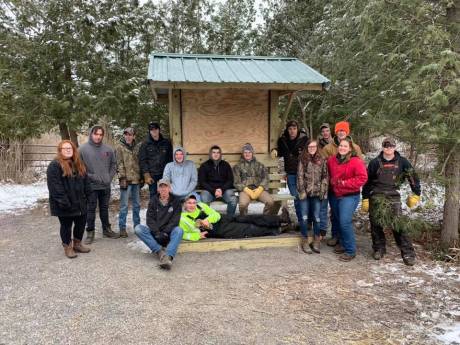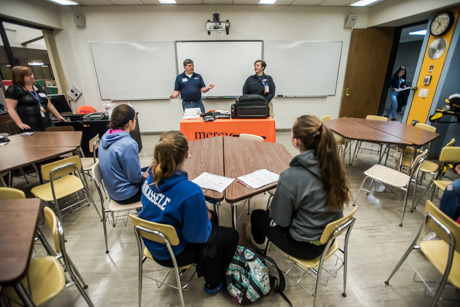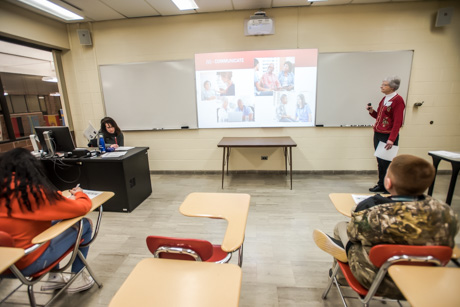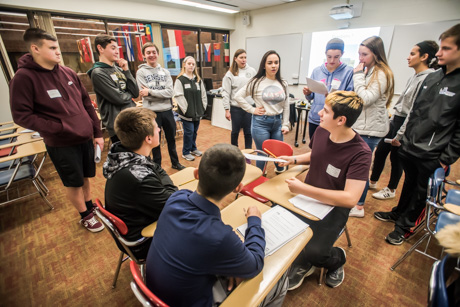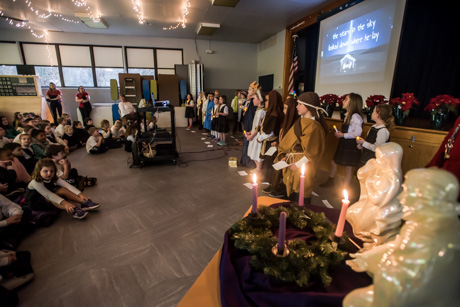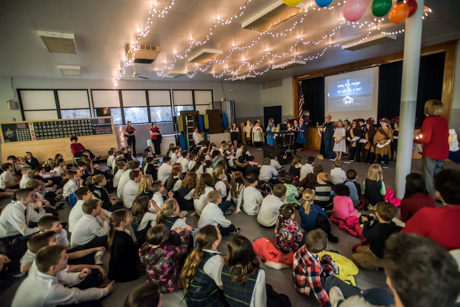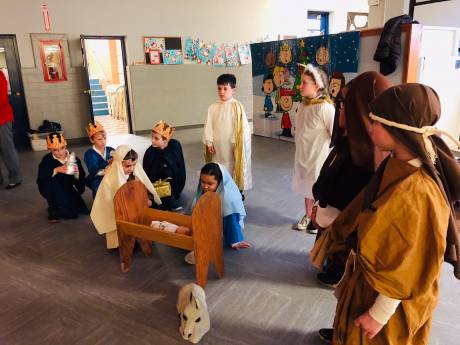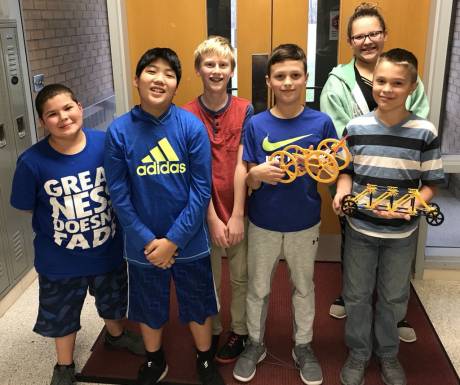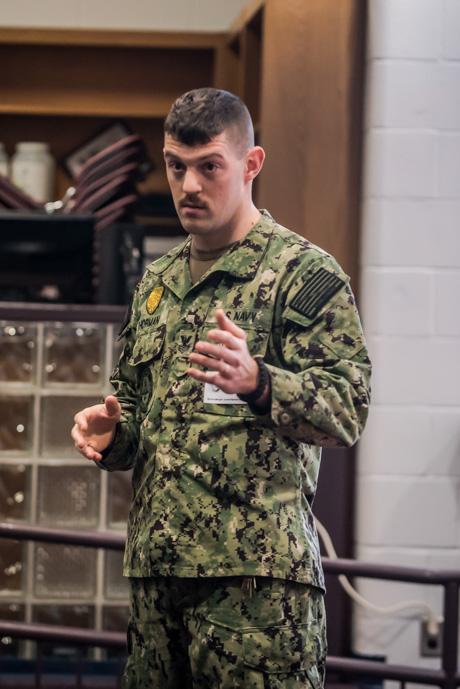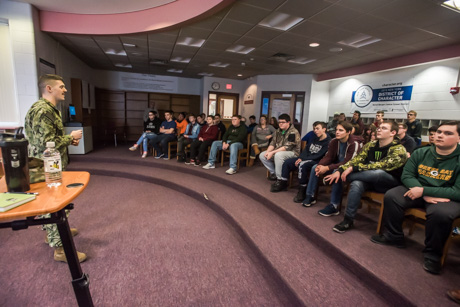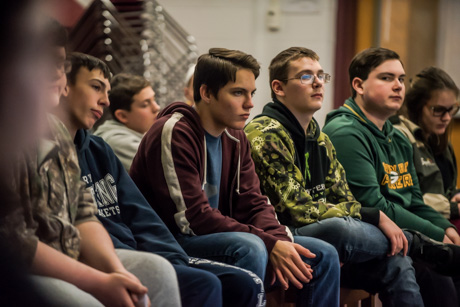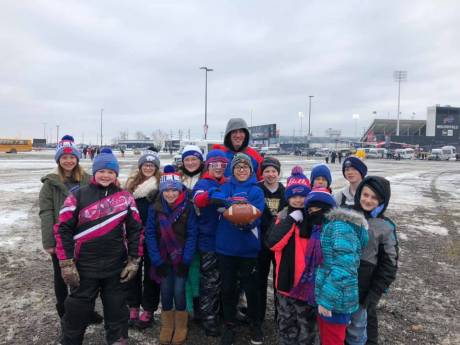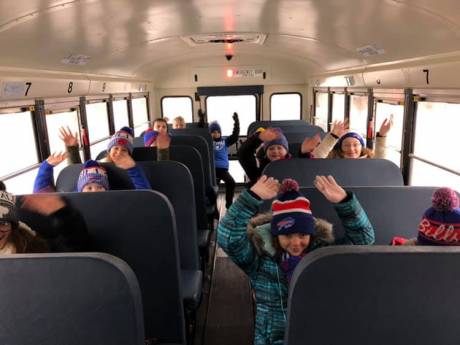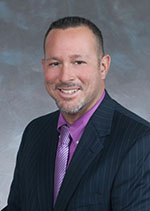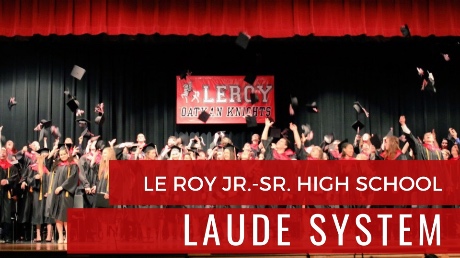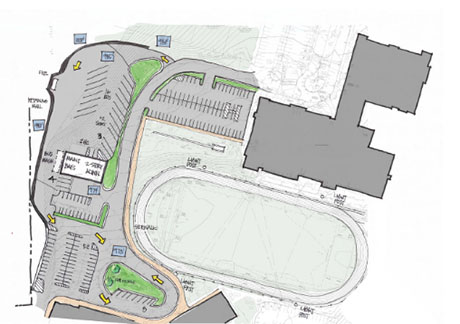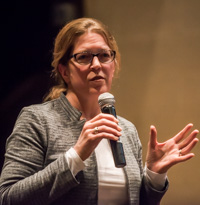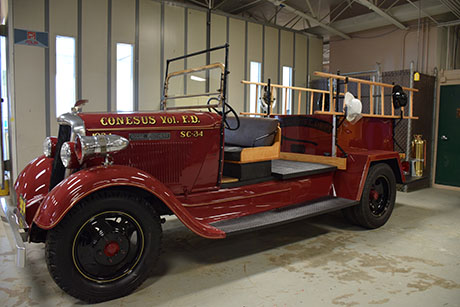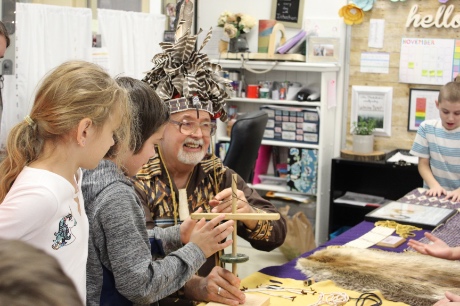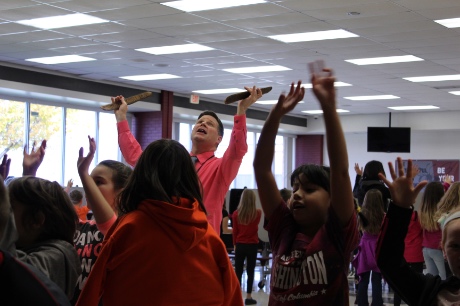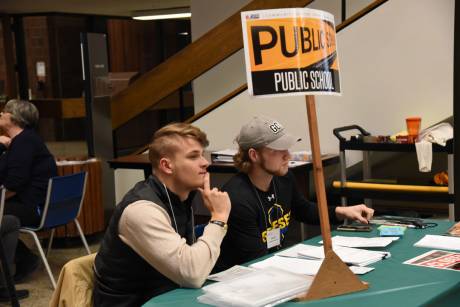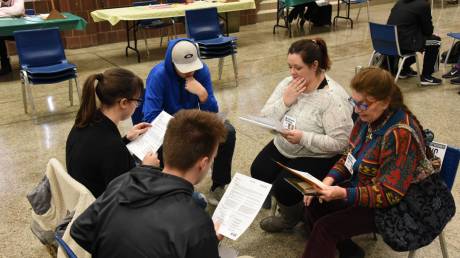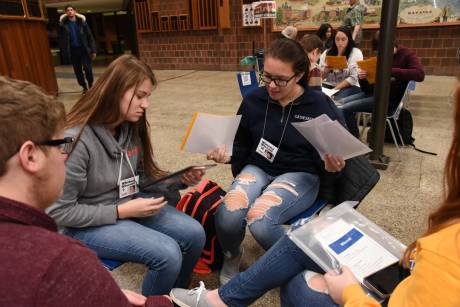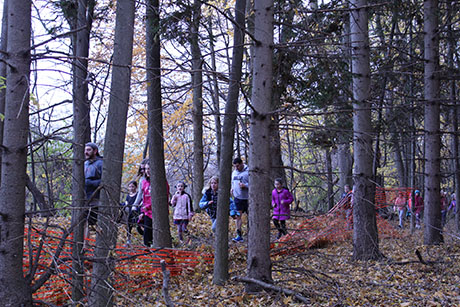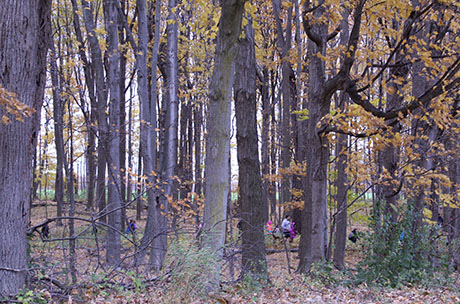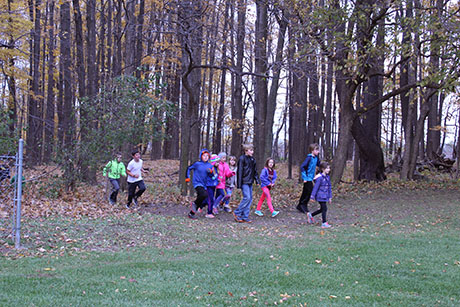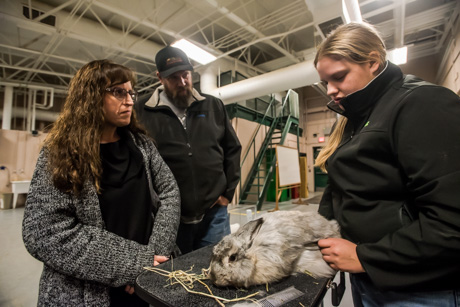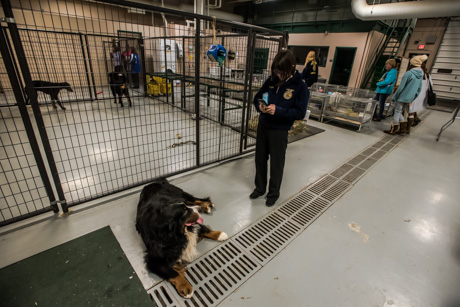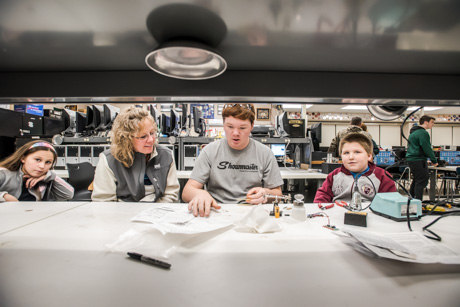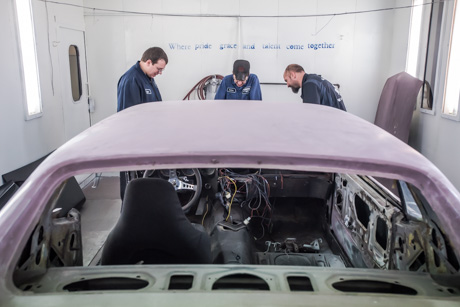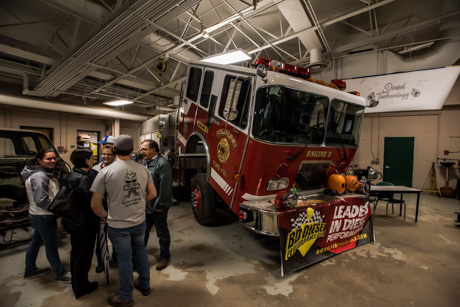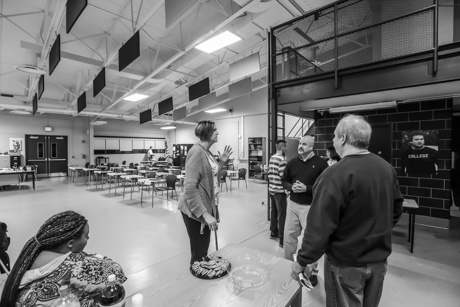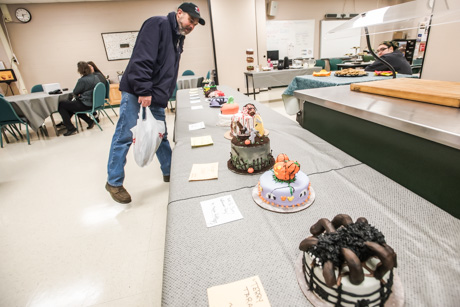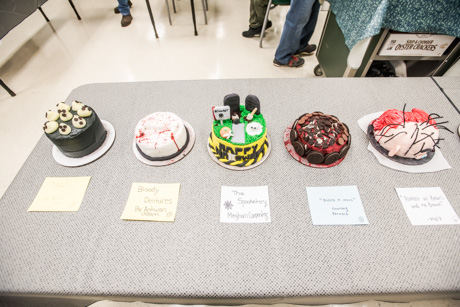Becky Cokelet, SEI Design Group
A $12.6 million capital improvement proposal for the Alexander Central School District truly is a collaborative effort by members of the local community, Superintendent Catherine Huber, Ed.D., told residents at a community forum Wednesday night.
"The committee worked tirelessly for several months and really came up with a plan that represents the voices of the community," Huber said. "The work was nothing but true collaboration and this plan really does represent the voices of our community."
The plan calls for a new bus garage, four upgraded classrooms in the elementary school building, and lights for the football field.
There are some in the community, including Toby Wade, who had a lot to say at the forum, who suspect the lights for football is a sort of bribe of the community to get approval for the bus garage.
"There is a perception out there by some people, and I admit, I'm one of them, who think you are just throwing them a bone so you can get the rest of the stuff you want," Wade said.
Huber said the football lights were included because lights on the football field are a long-standing request of the community. She said it was one of the first things brought up to her by community members when she joined the district two years ago. The need for a new bus garage and dealing with the classroom situation is driving the need for a capital project, and that creates an opportunity to wrap in lights for the football field.
"We feel like this plan is not a matter of throwing a bone to anybody," Huber said.
The state requires school districts to do a facilities review every five years and identify potential issues that need to be addressed. To comply with that requirement, Huber said, the district formed a committee -- any member of the community was able to participate -- and committee members toured the entire district property.
"When we came back from our site tour, almost everybody in that room knew what our priorities should be," Huber said. "When we toured the transportation facility, we realized what dire straits that transportation facility is in. We had no idea what condition the classrooms were in on the garden level but flooding was happening there regularly. The transportation facility and the elementary school building, we knew we had to do something about that. That was our jumping off point."
The current bus garage is beyond repair, Huber said. Bricks are deteriorating, there are other structural problems, and modern buses don't fit in it well.
There is also a persistent complaint about the safety of the current location. The current configuration means buses must back up into both car and pedestrian traffic areas.
Another long-standing request from the community, Huber said, is for a sidewalk connecting the high school with the elementary school in order to improve safety.
The proposed new transportation facility would eliminate indoor parking for buses (a configuration the state would not fund), create bays for bus maintenance, and a second floor for offices for transportation staff.
The transportation facility would be on a raised elevation, creating separation from pedestrian traffic on the sidewalk next to the football field.
Huber said the district decided to build a new transportation hub at the present location of the bus garage because there was no other available space on school district property and with declining enrollment, it made no sense for the district to acquire off-campus property for buses.
"We looked at several locations on campus and everywhere we ran into issues -- slops, water flows, traffic," Huber said. "It's a very complicated space."
Becky Cokelet, project consultant, from SEI Design Group, explained the situation with the elementary school classrooms.
There is a problem with flooding in the lower southwest area of the building because of soil conditions and that has caused damage to the building.
The plan also calls for eliminating the bathrooms in each classroom and converting those to storage closets. Two new multi-stall bathrooms will be added where there is currently a classroom.
The classrooms will be updated with modern fixtures and features and module desk units purchased. There will also be new lockers installed in the hallway.
Funding for the $12.6 million projects will come from a variety of sources:
- $1.9 million from capital reserves;
- $750,000 from other reserves;
- and, 79 percent funded by state aid.
There will be no tax increase in either the near-term nor the long-term related to the project, Financial Director Tim Batzel said.
The district will be required to take out a 15-year bond on the classroom renovations and a 30-year bond for the new building but there will be no increase in the tax levy as a result.
The bonds will be repaid over the years by reimbursements from the state, not out of district funds (after the allocated reserves are spent).
While the statutory language of the ballot measure voters are being asked to approve Monday discusses using tax levy funds to pay for the project, that is language required by state law. In reality, Batzel, future tax levy money will not be used for the project. The expense of the project is completely covered by existing reserves and state aid.
If voters approve the project, Cokelet and her SEI colleagues will need until June 2019 to draw up architectural plans, then state officials will need to approve those plans -- a process that takes several months -- so construction won't begin before 2020 and then will take 10 to 12 months to complete.
Toby Wade said it seemed like there were a lot of unanswered questions about project details, particularly around the design of a retaining wall that he and others thought could present a safety issue.
Huber assured the audience that there is no way the district would approve plans that didn't adequately address safety issues.
As for the lack of detailed design plans, Cokelet said the stages of development are driven by state regulation. First comes the assessment, then a preliminary plan, which requires state approval, and then that plan is presented to the school board for approval. After the board approves it, it is brought to district voters for consideration.
It's only after voters approve it that architects can begin to actually design the buildings and infrastructure of the project.
Wade said that process is a problem because the district voters have been burned before.
"The year 2000 building project was a complete failure," Wade said. "We had to go through lawsuits and it was a huge disservice to people. I can respect that you're trying to do what is needed, but a lot of people in the community aren't going to trust that you're doing your due diligence and trust that it's all going to turn out right."
Cokelet didn't deny the previous project had numerous problems but she said she wasn't involved in the 2000 project, nor was her company.
"I'm ashamed on a professional level, on behalf of my profession, how that firm represented (and) handled that project, but thankfully that firm is out of business," Cokelet said.
However, the district won't be able to maintain the garage much longer. Soon the state will require it be replaced.
"I understand this requires faith and trust but I hope you will look at our most recent projects and I hope you see the great work that was done on limited budgets," Cokelet said.
Voters in the Alexander Central School District can vote on the capital improvement project at the school on Monday (Dec. 3) from noon to 8 p.m.

